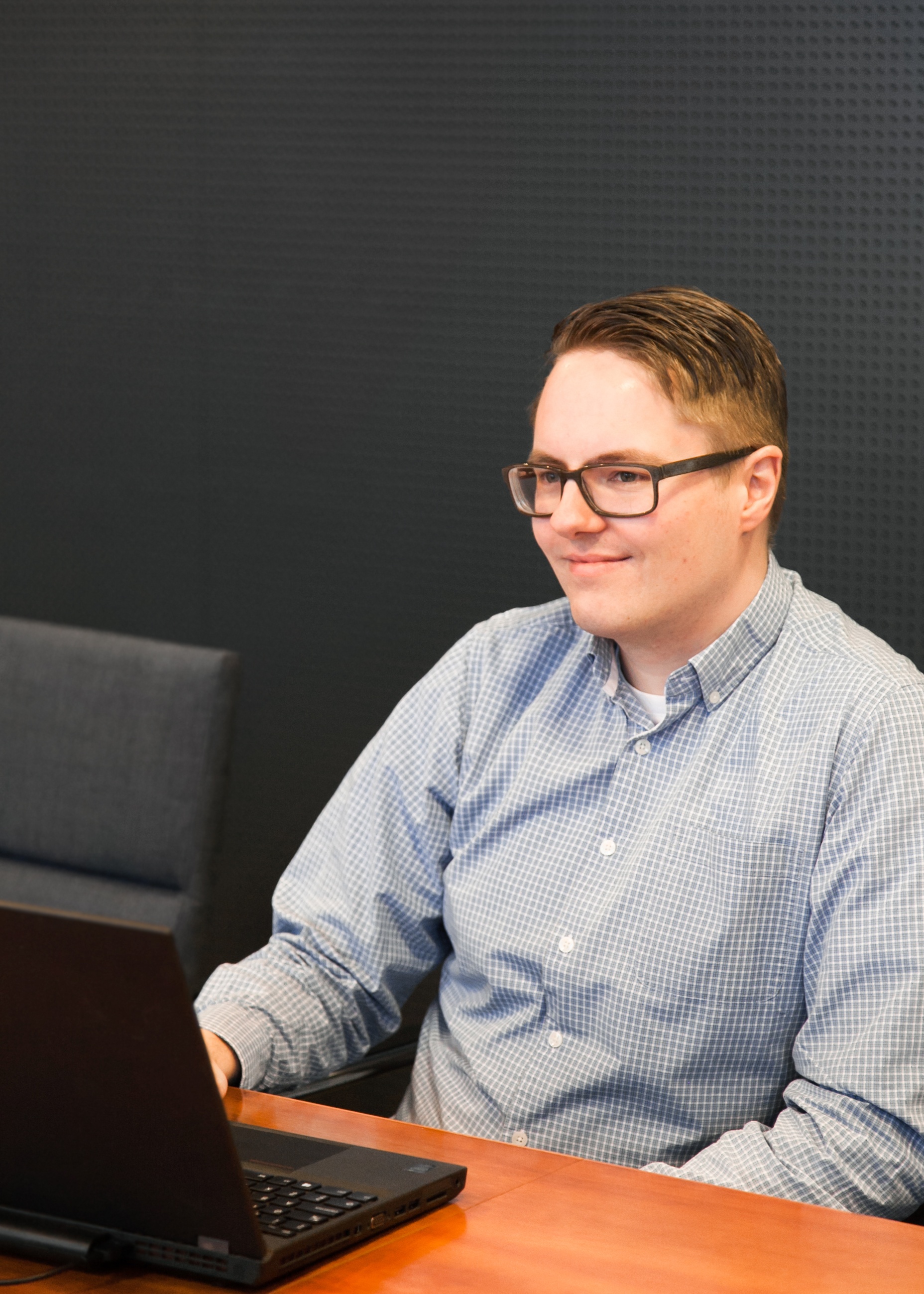August 9, 2018
Joni Vehmas made the switch from a researcher in radio science to a patent attorney at Kolster, and now enjoys daily challenges and diverse customer contacts.
Brought in by an epiphany
I have always had a keen interest in natural sciences and technology. I completed my D.Sc (Tech.) three years ago and continued as a postdoctoral researcher in radio science at Aalto University. While the world of academia is fascinating, I wanted to find alternatives to a career in research. As many of my fellow researchers had found work in the field of intellectual property rights, I realised that the sector is open not just for trained patent and IP legal experts. At Kolster, I have the opportunity to study and qualify myself as a patent attorney while working. The patent field feels right for me, and I am always eager to learn new things.
Versatility fosters inventions
My own area of expertise, communications engineering, is closely linked to patents in many other fields. Especially with the advent of the Internet of Things (IoT), any kind of device may include antennas, sensors and processors that communicate with other devices or cloud services. Inventions in this field are often cross-disciplinary and can involve devices, processes and software. I have protected inventions across a wide range of fields, from radio and measurement technology to power electronics, materials technology and machine learning. The latest innovations in communications engineering from IoT to 5G also feed my own curiosity.
A global field
My work is in many ways global. I use English in patent applications and often in the correspondence with clients and authorities. The IP contact persons of companies may be based anywhere in the world, and our clientele of inventors is increasingly international. As patents are country-specific, I cooperate with patent attorneys from various countries. Since national practices and patent legislation may vary wildly between countries and the language of processing applications is not always English, help is often needed both ways. The cooperation is made easier by Kolster’s extensive international partner network.
China moving in
The arrival of Chinese companies on European markets in force is evident also in my work. The Chinese are active in applying for European patents for their inventions. I have assisted my Chinese colleagues in obtaining European patents, for example by preparing responses that are in accordance with European patent practices to official actions issued by the European Patent Office.
The best solutions for clients
My work is customer service that puts the need of clients first. Due to this, active contacts and communications with the client is crucial in all stages of the patenting process. When seeking protection for a new invention, we first go over the company’s IP protection goals and the invention’s essential features. My task is then to compact the invention into the form of a patent application that provides the widest possible scope of protection for the client. At the same time, it is also essential to be able to recommend the most appropriate forms and strategies of protection for each client and invention.
Mentoring a great help early on
During my time at Kolster since November 2016, I have received the best possible mentoring from my fellow patent attorneys. Right after I had begun work, I was given the chance to prepare my first patent application for an international ICT company under my mentor’s instruction. The process of writing applications and responses to official actions by patent offices involves a great deal of analytic problem-solving, precise wording and delving into the details of patent legislation. Self-study is important, but the best approaches and methods in the field are learnt through practice. At Kolster, I value the open atmosphere and the possibility to turn to any senior colleague for cooperation in demanding situations.
Toward qualifications step by step
The professional competence of a patent attorney is built on both experience and training. The first step on this path was the Aalto PRO training, the so-called extended course in patenting. It included two days of training each month during one year, as well as a study trip to the European Patent Office in Munich. My next goal is to complete the Finnish patent attorney qualification and later, the EQE (European Qualifying Examination), which is required in order to act as an European patent attorney. After this, I am authorized to defend my clients’ patents against competitors in the legendary oral opposition and appeal proceedings at the European Patent Office. The ability to successfully handle oral proceedings as a defendant or appellant is a sure sign of a first-rate patent professional.
Challenging myself
With each patent application and official proceedings, I learn something new about both the processes of patenting inventions and the technologies that the inventions concern. The most interesting aspect of my work is that every application and client is unique. I have worked with a wide range of large and small companies, and drafted patent applications for innovations in a variety of fields. I am also delighted that my link to academia has remained intact, as I have already worked with inventions from four different universities.
A patent attorney’s dream
I would be extremely thrilled and inspired if, one day, an invention related to my dissertation in radio science would find its way on my desk and lead to a patent and a commercial product with international success. My dissertation dealt with electromagnetic composite materials and their application in antennas. Such an invention could be related to a new type of IoT sensor or antenna structure which would be a technological leap forward for the ICT sector.

Joni Vehmas, joni.vehmas@kolster.fi, +358 50 4364787
